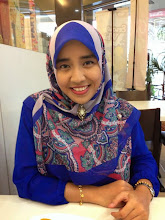Alhamdulillah, murid tuisyen bertambah daripada 4 kepada 6 orang. Asalnya aku berat hati nak amik ramai ramai ni. Al maklumlah,kelengkapan tuisyen sekadar meja bulat kecik saja. Whiteboard nak menulis pun tak ada. Satu sesi, meja tu boleh tampung 3 orang ja. Kalau lebih, alamatnya, tulis berlaga siku. Lagi satu aku malas nak amik ramai ramai takut tak boleh nak fokus kat dorang. Yang datang tuisyen darjah 1, 3 dan 4. Aku tak boleh nak asing dorang ikut darjah pasal dorang ada group sendiri dah. Dorang dah selesa dengan kawan masing masing. Misalnya pagi, 3 orang datang dan dorang ni memang dah kenal satu sama lain sebab sepupu. Yang petang pulak, 3 orang kawan baik kat sekolah. Kalau aku cuba pisahkan depa ikut darjah, payah kat depa balik. Jadi segan nak datang tuisyen pasal tak ada geng. I know it is hard to make new friends.Tambah tambah berlainan jantina.Lagi la malu alah. Tapi, jadi susah balik kat aku pasal aku terpaksa sediakan different worksheets untuk depa. FYI, darjah 4 still guna KBSR which means they will sit for their UPSR in two years time. They are the last batch who will sit for UPSR. So, tak jadi masalah untuk aku cari bahan pasal dah tau dah nak fokus kat mana. Yang jadi masalah yang darjah 1 dan 3 tu. KSSR. Awal awal tu masalah jugak la aku nak cari bahan mengajar kat depa. Tak tahu nak start mana dulu. Should I just teach vocabulary or what? Makan masa jugak nak mencari buku yang sesuai untuk depa.
What I found from teaching these two different groups (KBSR vs KSSR) is that kids who experience KBSR are better in constructing sentences.Mind you this is my personal experience dealing with kids who have a range of low to average level of English proficiency. They know which comes first. SVO/SVA. Hah.Siapa yang ajar English, faham la SVO semua tu. However, they are weak in pronouncing and spelling words. Mungkin inilah yang membezakan KBSR dan KSSR. Because the KSSR kids are very good in pronouncing words as they are exposed to learning of phonemes. For me, it's very simple. If they can pronounce words correctly, they will know how to spell it correctly. That's what I found from KSSR kids. But then, since grammar is not taught till they reach standard 3, I am quite concern on how they will perform when they reach standard 6. Will they be able to construct sentences as good as KBSR kids? We will find out soon.
p/s: Dapat 2 kuntum bunga ros daripada murid tuisyen tadi. Katanya untuk Hari Guru yang bakal tiba nanti.Awai sungguh noh bagi! Hahaha.
Friday, May 10, 2013
Subscribe to:
Post Comments (Atom)














6 comments:
its good that u realise the difference. One of the main weaknesses in KBSR is .. grammar is not been taught overtly. Students tend to regard it as umimportant whereas grammar is essential. THey are know as MAJOR error if not used correctly in writing essay. So y not u teach the kids .. some important basic grammar rules. Teach them the spelling rules too. Towards the end of the lesson .. make them write a simple sentece based on the object around them. A sentence will do as a start.
* uminportaNT - uNimportant
know - kNown
awat tuisyen jd tusyein hihihi
Assalamualaikum,
I'm hoping that by the time the kssr students start to learn grammar formerly, they will be instinctively know the basics of sentence making due to habitual use of the language. Problems will arise if students are weak in their speaking component, thus making it difficult for them to make the transition from speaking to writing. In my experience, students who speak well tend to have less major problems in writing, although they will have to be alerted to the differences between written and spoken English.
Just my two cents. TQ.
bagus z@ck..mengajar tuisyen pon bole kire tempat utk gain experience..kssr ngan kbsr..aku xtau apa2..haha..anyway keep up the good work k z@ck :)
To me, the most important difference between KBSR and KSSR is that it is now more fun. The use of drama, debates, language games and songs encourage kids to actually speak the language instead of just learning it. I find this important especially for the younger students.
Post a Comment